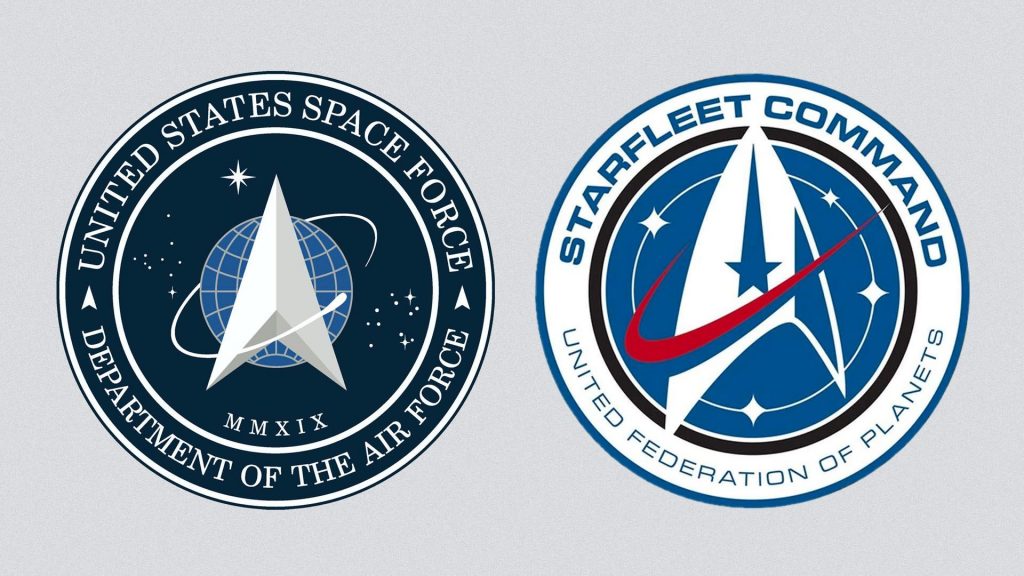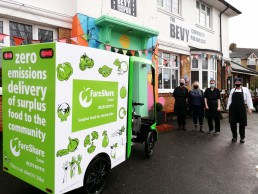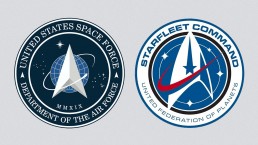Electric Bike Livery Design
Electric bike livery design
Great to see the FareShare Sussex eco delivery van out and about. Delighted to have helped design it along with fab illustrations from Sandra Staufer – looking good!
Vehicle Signage and Livery
If you have a company car, delivery van or better still an Electric Bike then it pays to consider using signage to advertise your services. Think about it, even when the vehicle isn't being used as a mobile billboard and is parked up, it's a constant advertisement for your business or company. No one ever walks up to the driver of a blank van and asks for their business card. A well designed service van creates confidence, trust and credibility among your customers, it also raises your profile and helps you stay in your potential customers minds.
Professionally designed signage helps to give the impression that the business owners know how to take care of their business and have pride in doing so, which in turns builds confidence in customers that they will be well looks after. The most effective wrapped vehicles are those that have solid design and utilise good branding. This may be an opportunity to look at your brand. Does it need refreshed? What could you do better?
When designing your vehicle signage or livery remember so keys points:
- Make sure your branding is consistent with your other marketing outlets, i.e. website, email marketing, social media accounts etc. This will ensure your customers will know they are seeing the same company or business.
- The message should be simple. If it's too text-heavy, for example, it will be hard to read. The most important information should be the largest and very visible; typically this is the company name.
- Don't try to mention everything you do or provide, you'll over crowd the design and layout and it will lose impact. Instead sum it up, what is your core business and what needs do you solve for your business?
- Remember to include your telephone number and website address. Obvious I know, but occasionally they get missed. Make sure they are clear and readable from a distance. If you can't read it when parked across the road no one else will be able to read it either.
- Make your design colourful and eye-catching. You are using your vehicle as mobile advertisements, so don't hold back when it comes to design. Make it fun, exciting, unique and distinctive.
- Remember to check your spelling, even better, ask others to do it for it. There is nothing worse that a typo in the signage, this will paint a bad picture of you in your customers minds.
If you'd like some help and advice about your vehicle signage and livery get in touch, we'd be delighted to help.
About FareShare
Hundreds of thousands of tonnes of good food is wasted by the UK food industry every year. At the same time, millions of people are struggling to afford to eat.
Our work addresses these two issues by redistributing food industry surplus which would otherwise be wasted, to the people that need it most.
We provide food to charities and groups that deliver services in addition to meals, such as advice and guidance, health support, counselling and befriending, to help break the cycle of poverty and use food as a vehicle for good above and beyond alleviating hunger.
Checkout the great work FareShare Sussex are doing in these hard times, if you can volunteer, fundraise or donate, please do.
Gamification in your marketing strategy
Gamification in your marketing strategy
The term ‘gamification’ is is widely used these days It’s also something that we’ve noticed is cropping up in conversation with our clients on a regular basis as they consider creating their own gamification marketing strategy. So, what exactly is gamification and how does gamification fit in to your marketing strategy?
The answer to the first question is fairly straightforward and has been covered extensively on sites such as Wikipedia:
"Gamification is the application of game-design elements and game principles in non-game contexts. It can also be defined as a set of activities and processes to solve problems by using or applying the characteristics of game elements. Gamification commonly employs game design elements to improve user engagement, organisational productivity, flow, learning, crowdsourcing, knowledge retention, employee recruitment and evaluation, ease of use, usefulness of systems, physical exercise, traffic violations, voter apathy, and more."
The answer to the second question has been surprisingly established for some years. Gamification has been embedded into marketing strategies since day 1. Incentives have been central to both marketing and gaming strategies; encouraging us all to better ourselves with the latest products, improve our skills with the most difficult challenge or by simply offering us an escape from reality.
Gamification takes the essence of what makes games so “fascinating and irresistible” and integrate them into non-game experiences, i.e. marketing strategies and campaigns. Adding elements to your site or app like: rewards, challenges and incentives triggers a sense of achievement and makes use of the competitive nature in people, encouraging them to use your app or website even more, because they’ll enjoy it.
Why does gamification work?
- You create a fun experience for your audience, which will lead to a longer and more engaging relationship.
- It motivates your customers to participate: there are chances to be rewarded, to win something or to gain recognition.
- It gives you an emotional connection with your customers, increasing the possibility that they’ll also become more loyal to your business.
- It’s for “all-around” uses since you can add game elements to different areas. Think project management, recruitment, marketing and more.
Gamification can increase the engagement of customers, prospects and partners. Rewarding them (it doesn’t’ have to be something materialistic, it can also be recognition or even valuable content) can increase their loyalty and positive feeling towards your business. It speaks to the sense of achievement & competition of the people. People want to be noticed and get rewarded. Performing better than their peers will leave them with a sense of achievement. It will help your prospects identify each other. Having gamification tools, can help you segment your prospects, so you can make them a more personalised offer.
Gamification in your marketing strategy
- Incentive - Is there a valid reason for introducing gamification and, if so, a strong incentive to ensure it is a success? From rewarding users with improved status, access to new content or just free stuff, being clear about how you intend to motivate your audience is a vital gamification technique.
- Process - Are there existing processes in place that can be adapted and, if not, how will the gamification of your products, services or content be managed? If you can identify activity that your users are already performing and ‘gamify it’ then you can instantly add value. Alternatively, if you’re trying to convert your users to new behaviour then make sure the gamification process is easy for them to buy into.
- Context - Is it the right audience on the right platform? In simple terms, if you want to use gamification as an HR tool, make sure that the technology is accessible to all as a web service and not just as an app. If your target audience are already using a particular device then go with the flow and develop a solution around their technology choices.
- Objective - What do you hope to achieve from the gamification process and is it a short or long term objective? Using freebies as an incentive is a quick win but being able to give your users improved status amongst their peers or giving them ongoing access to exclusive content has the potential to create brand loyalty in the long term.
- Scope - How long will this take and how much will this cost? An obvious question when undertaking any marketing or communications activity. However, if this is something new to your brand or business then scoping out the project properly in the first place will provide your creative and technical partners with a much clearer understanding of your expectations.
Entertainment, education and engagement through gamification can help you to engage with different target audiences and build long term brand loyalty. There are many stablished webinars and conferences that specialise in gamification, such as Gamification Europe and Gamification+.
What ever you decide to do, make it fun!
Logo design – is this plagiarism at its most blatant?

Serious questions have been raised about plagiarism in logo design with the unveiling of the newest branch of the United States military services logo.
On the one hand, Donald Trump's Space Force logo gives an open nod to Star Trek's badge, perhaps reflecting Trump's refusal to grow up. It has also fulfilled very marketers quest to gain attention to the launch of not just the logo, but the introduction of a Space Force. Job done.
On the other hand the Space Force logo design closely resembles the Star Trek badge, (seen on the right in the image), raising the question was this just openly copied. The Space Force logo design takes many common elements relating to, well, er, 'space'. The pointed, arrow-like craft shape, a planet, orbiting satellite and of course a sprinkling of stars. Elements that you can argue are necessary in the design of any space-related logo. But surely a good creative designer will push the boundaries to try and use more clever, inventive imagery helping to create a more distinctive and memorable logo design?
I struggle with the design of this logo, both with it's slightly dated feel in the design elements and what to me looks like blatant plagiarism. The planet looks like a hark back to the old Pan Am logo, the sprinkling of stars a little child-like and the serif typography around the logo simply dated and weak.
To be honest I wish they had boldly gone and just asked the owners of the Star Trek legacy if they could just use their logo. It's much clearer, distinctive and even futuristic.
Beam me up Scotty!
Check out Design Week's article 'The United States Space Force logo deconstructed' https://buff.ly/2O30oNW
If you would like some help on creating a distinctive and original logo for your business or organisation, then get in contact for a chat about how we can help you.
How to choose a business name

How to choose a business name
One of the best things about starting your own business is being able to choose a name for yourself. But it’s not as straightforward as you might think. It’s something you have to get right, not just for legal reasons but for creating the right impression.
This article will show you how to choose the right name and what you’ll have to do to ensure you’re following the official rules, that’s whether you’re becoming a sole trader or limited company…
Giving the right impression
When choosing a company name, keep in mind that it will act as a first impression of your business. You want your name to convey the right feeling and message. That’s whether you’re trying to get across professionalism or something fun and different. It should also work across all mediums including your website, marketing and signage.
Consider pronunciation and spelling
Just consider how many times you’ll have to give your details out over the phone! Now think about your potential business name. Is it easy to pronounce? Will people understand what you’re saying? And is it easy to spell? Try to pick something that’s easy to say and write.
Reflect what you do
If appropriate, consider a name that reflects what you do. This will get across very quickly what your business is about to potential customers. It might also help in terms of Search Engine Optimisation (SEO) where you can benefit from having a keyword or two in your name. But only do this if your business isn’t likely to change and offer different services in future.
Think about the future
Always keep the future in mind when choosing a name for your business. Are you likely to expand? Will you be providing additional services in future? Choose a name that can easily see you through the next 10 years. Don’t pick something that’s going to narrow your growth. You also have to choose something that won’t date easily, so avoid words and phrases that could easily go out of fashion.
Trading and corporate names
Did you know you can choose an official ‘corporate name’ but you can choose a ‘trading name’ to represent that corporate name? This means you can choose something quite corporate for your actual official name but create a trading name that’s creative, or shorter and sweeter. You just have to make sure you highlight your trading name/corporate name on all marketing materials, including your website.
Consider potential overseas hurdles
Are you going to be trading overseas? If so, check that your business name doesn’t mean anything offensive in any other language. You don’t want to limit yourself before you’ve even started, so double check meanings in other languages.
Check availability
So you’ve got a few ideas knocking around – the next important step is checking availability of your name ideas. Go on to the Companies House Web Checker to see if anyone else has already beaten you to it. And if you’re home-free, go on something like 1&1 Ionos to check that relevant domain names are also up for grabs. When purchasing domain names, it’s wise to buy something that not only has the ‘co.uk’ available but the ‘.com’ as well.
Names for sole traders
If you choose to become a sole trader, you’re allowed to operate your business under your own name but you can choose anything you like. However, there are some legal aspects to remember:
- Your business name must not be offensive;
- include any of the terms for public limited company (PLC) or limited (LTD) or LLP or their Welsh equivalents
- or contain any sensitive words or expressions (i.e. there are certain words/expressions you’re not allowed to use unless you have official permission, for example ‘British’ and ‘Authority’).
Next, check that no one else is using your proposed business name. Bear in mind, that if a sole trader at the other end of the UK has the same name, there might not be an issue. But you could run into trouble if another local firm is using it. In which case, you should choose a different name. How do you check to see if someone’s already got your name? Look through phone books, use Google or simply use the most excellent Companies House Web Checker.
Things to consider for limited companies
If you’re forming a limited company you must register your name and any other relevant details with Companies House. Bear in mind, it’s essential your proposed name does not breach any rules on name endings, ‘same as’ rules or include a prescribed or sensitive work without prior permission. Here’s the rules so you don’t get stuck. You must ensure that:
- Your name ends with ‘limited’ or Ltd
- Your name isn’t offensive
- Your name isn’t the same as anyone else in the index of company names (which you can check via the Companies House website)
- Your name doesn’t include anything sensitive in terms of words or expressions… unless you’ve had official permission to use them.
Double check trademarks
Another important point is trademarks. You have to make sure your proposed business name isn’t the same or very similar to a registered trademark. Use this handy Company Name and Trademark Checker.
Displaying your business name
Did you know that every business must display its name and relevant details to show customers who they’re dealing with? If you’re a limited company, you have to display your registered name on all hard copy and digital correspondence and documents. This includes: letters, notices, emails, bills of exchange, invoices and even your website.
But what information must a limited company display? You must show:
- the place of registration and your registered business address
- the registered business number
- whether it’s a limited company.
Please note, you’ll also have to display your VAT registration number on your business website.
For sole traders, you must display your business name, your own name and your business address in all areas, i.e. across all stationery, correspondence and your own website.
And that’s how you choose a business name. You’ll need to do this before anything else because if you’re opening a business account, they’ll want to see a letterhead with your business name and logo printed on it. Plus if you’re informing the Inland Revenue of your new business, they’ll need to know as well.



